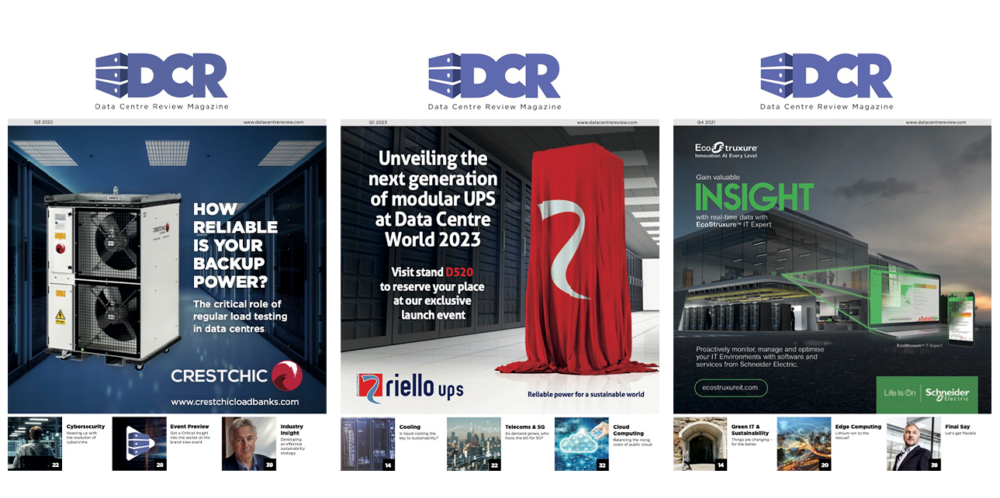Chris King, VP/GM Data Centre Solutions EMEA at Johnson Controls, argues that next-generation cooling is the linchpin for meeting AI-driven demand without sending energy and water bills – or the planet’s temperature – through the roof.
The data centre industry is at a defining crossroads. As our reliance on cloud services, digital infrastructure, and AI surges, the power demands placed on data centres are accelerating at an unprecedented pace. According to a recent report from the International Energy Agency (IEA), the amount of electricity needed to power the world’s data centres is expected to double by 2026.
This growth is not simply a consequence of increased internet use; it’s largely driven by the rise of increasingly powerful AI models and their vast computational needs. AI workloads can consume up to 10x more energy than a standard web search query. And that’s before we factor in other resource-intensive technologies like blockchain or high-performance computing. The challenge is no longer just scaling to meet demand; it is doing so sustainably.
The opportunity behind the energy
Amid headlines about energy strain and climate impact, it is easy to overlook a more promising truth: the solutions we need to operate data centres efficiently, without compromising performance, are already here. The most advanced cooling systems today significantly reduce both energy and water usage, enabling operators to meet growing demands with a fraction of the environmental footprint.
These are not future aspirations, they are being implemented now by forward-thinking operators who are aligning performance with purpose.
The cooling conundrum
Cooling remains one of the most resource-intensive aspects of data centre operation, in fact, it accounts for around 40% of a data centre’s total energy consumption.
What’s more, data centre cooling also has a major water footprint. A single 1 MW facility can consume up to 25.5 million litres of water annually for cooling alone, roughly equivalent to the daily water consumption of 300,000 people. In an era of climate volatility and global water stress, this level of usage is increasingly untenable.
Against this backdrop, modernising data centre cooling isn’t just a nice-to-have, it’s a business and environmental imperative. Operators must reimagine cooling as a strategic driver of energy and water efficiency, cost control, and long-term sustainability.
However, with the emergence of closed-loop liquid cooling, air-side economisation, and intelligent thermal management, data centres can now maintain optimal temperatures using far less energy and, critically, far less water. Some innovative facilities have achieved near-zero water use, highlighting what’s possible when sustainability is built into the infrastructure, not bolted on as an afterthought.
Trends reshaping the future of cooling
Data centre cooling is rapidly evolving in response to three key pressures:
- Rising rack densities: with more computing power packed into less space, operators are demanding cooling systems that can handle higher thermal loads efficiently.
- Space-constrained sites: limited land availability and urban regulations are driving a need for compact, modular systems that scale with infrastructure.
- Higher ambient temperatures: as both internal heat loads and global temperatures rise, systems must adapt to changing conditions while remaining energy efficient.
These pressures have inspired a new generation of cooling technologies and system designs tailored to the evolving needs of today’s, and tomorrow’s, data centres.
Driving down water usage
Beyond energy savings, smarter cooling systems are also helping operators tackle another critical challenge: water consumption.
Water Usage Effectiveness (WUE) is rapidly becoming a key performance metric alongside Power Usage Effectiveness (PUE). Regulators, investors, and customers alike are asking more questions about how data centres manage their water footprint, particularly in drought-prone regions.
Next-gen cooling solutions, especially closed loop liquid and immersion systems, significantly reduce the need for evaporative cooling and other water-intensive processes. Some approaches even enable fully waterless cooling. Meanwhile, advanced building management systems can monitor and optimise water usage across entire facilities, helping operators identify inefficiencies and continuously improve performance.
By investing in these technologies, operators not only reduce their environmental impact but also enhance their resilience in the face of stricter regulations and shifting climate conditions.
Aligning performance and sustainability
Ultimately, the challenge facing the data centre industry is about balance. We must continue to push the boundaries of performance and innovation, enabling AI,
automation, and digital transformation, while also ensuring that our infrastructure is resilient, efficient, and sustainable.
That’s where smart cooling can be a game changer. It sits at the nexus of performance, cost-efficiency, and environmental responsibility. By embracing cooling innovation, operators can reduce their total cost of ownership, meet stringent emissions and water usage targets, and future-proof their facilities for the next wave of technological change.
The benefits of smart cooling solutions go far beyond just energy savings. They also support:
- Lower total cost of ownership (TCO) through reduced energy and maintenance costs
- Regulatory readiness with equipment that meets or exceeds emissions and water usage targets
- Future compatibility with hybrid cooling strategies that bridge today’s air-cooled systems and tomorrow’s liquid-cooling demands
As the industry eyes exponential growth, particularly with AI and edge computing expansion, cooling systems must be as agile and intelligent as the technologies they support.
From challenge to competitive edge
Data centres are rapidly becoming the backbone of the digital economy. But as the IEA warns of soaring electricity use, now is the time for operators to double down on smart efficiency.
Ultimately, smart cooling is more than an operational necessity, it’s a strategic differentiator. It enables operators to support demanding AI and cloud workloads without scaling their carbon or water footprint in lockstep.
As the digital economy expands, the data centres that thrive will be those that embrace innovation not just for performance, but for progress, proving that digital infrastructure can be both high-impact and low-footprint.
The technologies to achieve that balance are not theoretical or years away. They’re here, they’re proven, and they are already reshaping what a sustainable data centre looks like.


